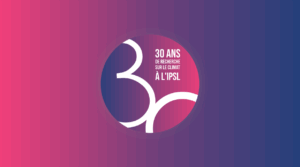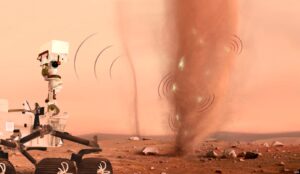Séminaire
Geoelectrical Signatures of Spreading and Mixing
Alejandro Fernandez Visentini
Alejandro Fernandez Visentini est post-doctorant au BRGM.
Description
Effective assessment of the fate of water-soluble contaminants leaked to aquifers is crucial for the management and preservation of groundwater resources. Contaminant solute transport unfolds over multiple spatial and temporal scales and is, thus, very challenging to characterize using conventional sparsely-sampled and local hydrological measurement techniques alone.
Complementarily, the time-lapse direct-current (DC) geophysical method provides spatially and temporally-distributed information on equivalent DC electrical conductivity, the latter being sensitive to the transport of electrically-conductive solutes and carrying information on solute heterogeneity below the measurement support scale. Combined with conventional fluid sampling, the DC methodology holds promise as a means to quantitatively characterize the state and evolution of solute spreading and mixing.
However, this requires establishing quantitative links between spreading and mixing measures and average DC electrical conductivity under general transport conditions. This calls first for quantification of the uncertainty of electrically-inferred solute transport measures and second for the development of an upscaling framework for predictive purposes. Since both tasks remain largely unresolved, there is a risk for systematic errors in the interpretations.
Here, we present numerical, experimental and theoretical investigations aiming at advancing in both directions. Relying on a Bayesian inference framework, we quantify to what extent time-series of the equivalent electrical conductivity tensor observed during tracer tests can constrain geostatistical parameters of hydraulic conductivity fields.
We find that the most and least informative data are the flow-aligned component of the tensor and the solute mass breakthrough, respectively. The variance of the field, controlling the spreading rate, is the best constrained parameter for all test cases and data types, followed by the integral scale in the direction perpendicular to the mean flow field.
As an experimental contribution, we report on an optically- and electrically monitored milli-fluidic saline tracer test aimed at understanding electrical signatures of the diffusion-limited mixing of an initially layered tracer distribution. We show that the different diffusion rates of the optical and electrical tracers must be taken into account to reach quantitative agreement between the optically-inferred and measured time-series of equivalent DC electrical conductivity.
We find that the electrical data can constrain the initial layers’ widths and associated diffusion transport time-scales as well as the degree of mixing of the tracer upon its arrival to the electrode positions. As a theoretical contribution, we introduce a new petrophysical parameter, the mixing factor M, to account for the impact of flfluid conductivity heterogeneity below the measurement support scale.
When considering anisotropic media, the diagonal components of the M-tensor depends on the variance and anisotropy ratio of heterogeneous conductivity fields, while the nature of the mapping is affected by the connectivity of the conductivity field.
We derive an expression for M, and thus for the equivalent conductivity, in terms of the expected value of the conductivity field fluctuations and the secondary electric field. Then, we study numerically the mapping linking the statistical properties of either field.
Informations supplémentaires
En présentiel
Sorbonne Université – Campus Pierre et Marie Curie
METIS-IPSL, salle Darcy
À distance
https://us02web.zoom.us/j/87229754623





